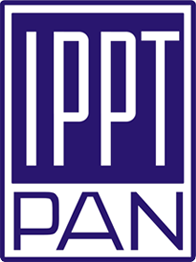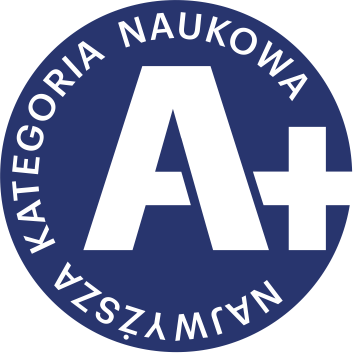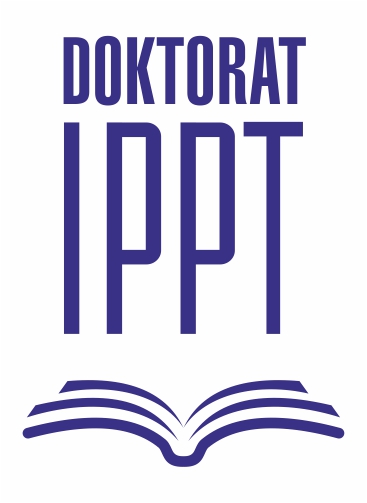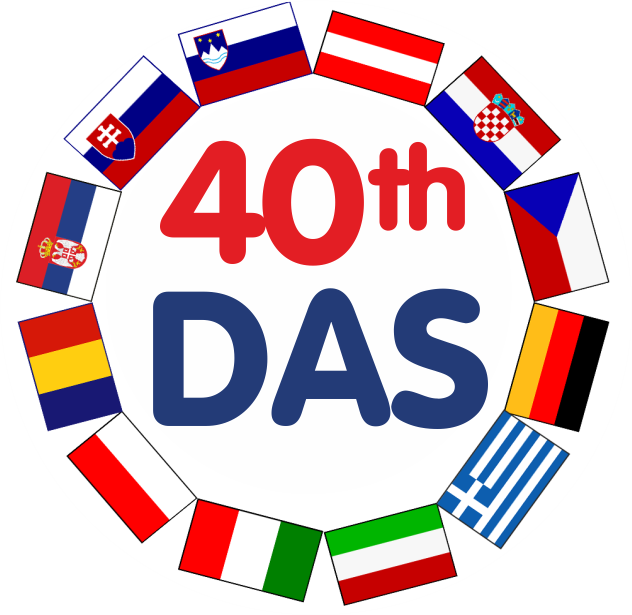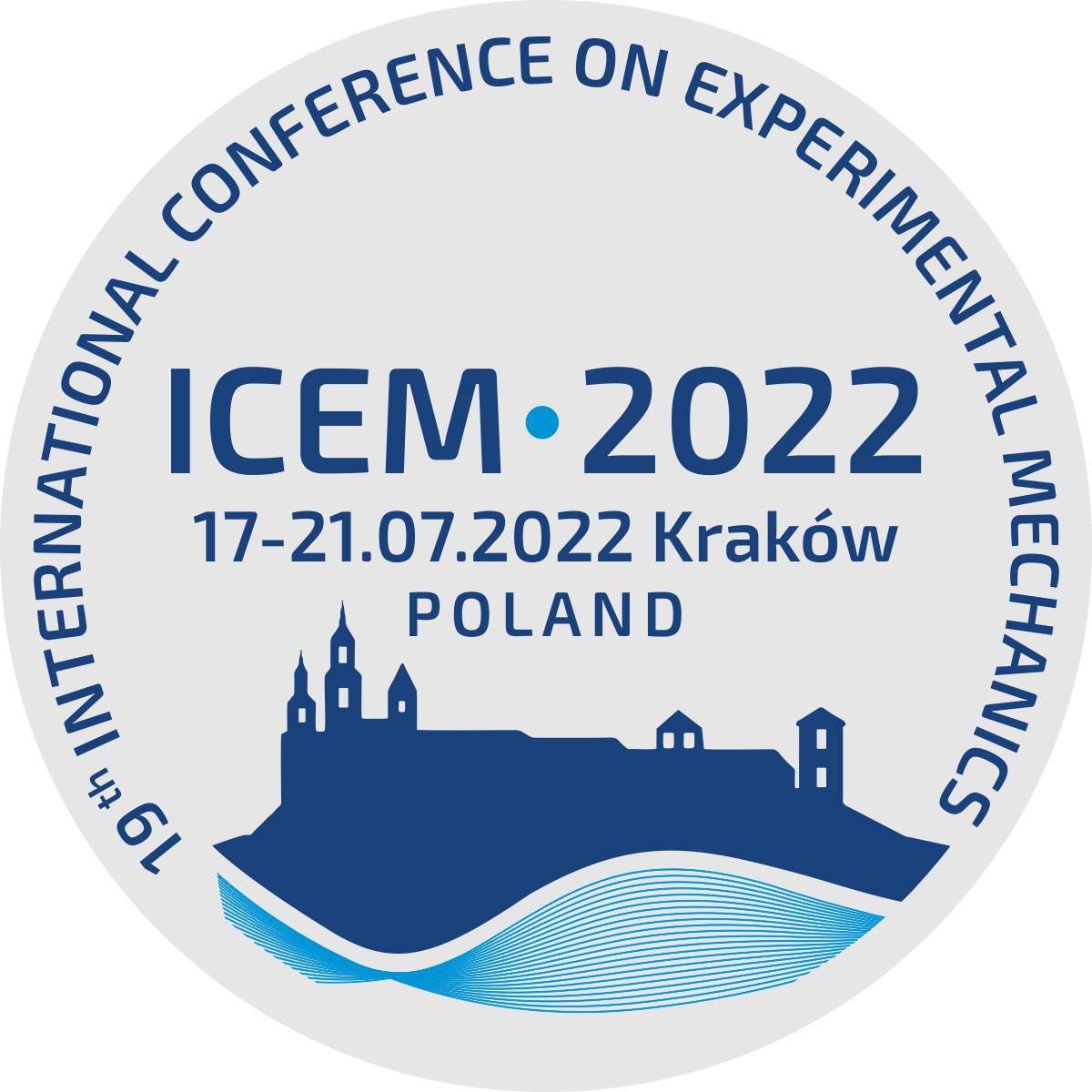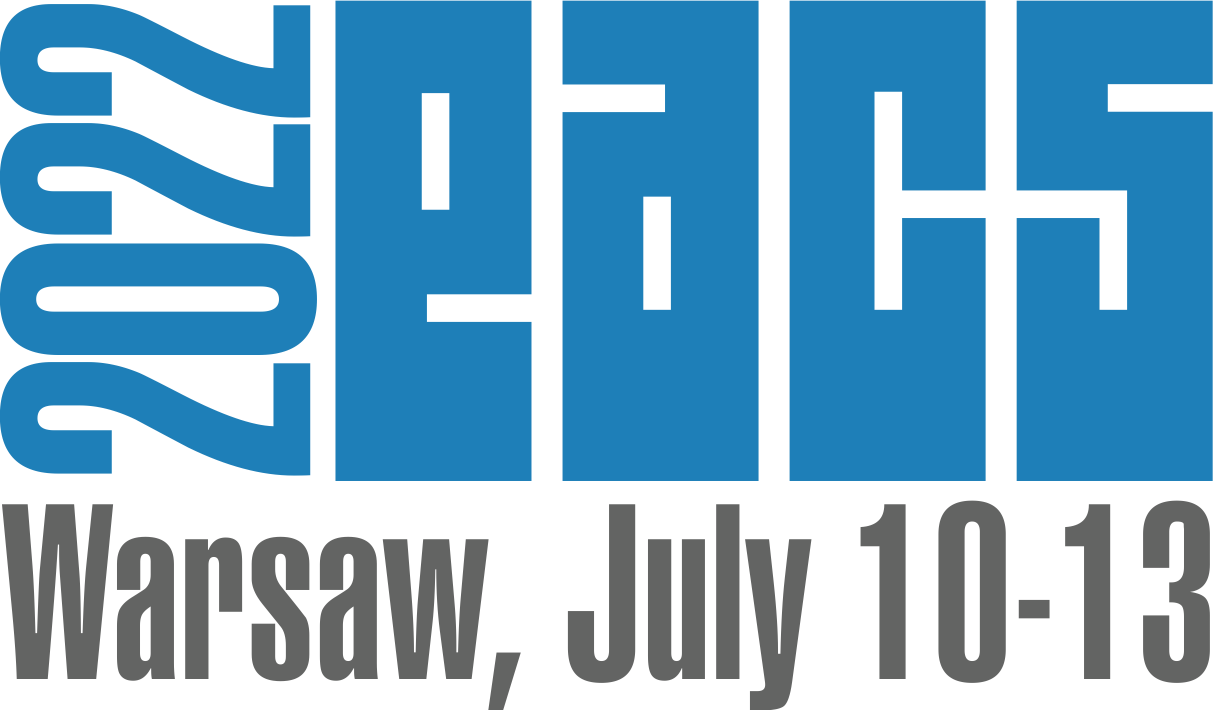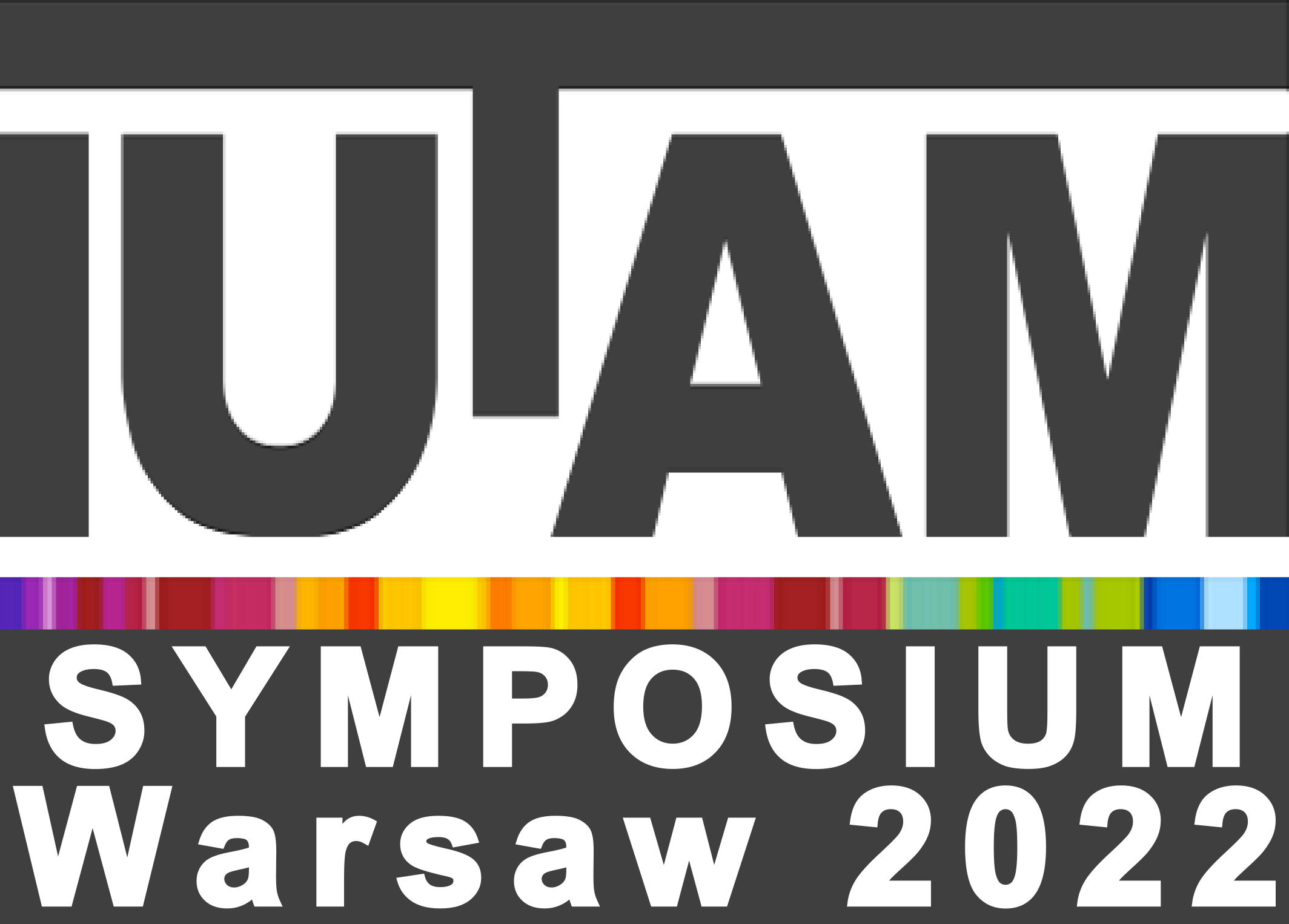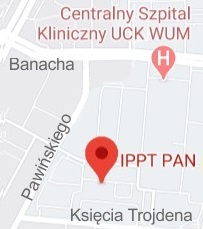| 1. |
Psiuk R., Chrzanowska-Giżyńska J.♦, Denis P., Wyszkowska E.♦, Wiśniewska M.♦, Lipińska M.♦, Wojtiuk E.♦, Kurpaska Ł.♦, Smolik J.♦, Mościcki T. P., Microstructural and properties investigations of tantalum-doped tungsten diboride ceramic coatings via HiPIMS and RF magnetron sputtering,
ARCHIVES OF CIVIL AND MECHANICAL ENGINEERING, ISSN: 1644-9665, DOI: 10.1007/s43452-024-01050-0, Vol.24, No.239, pp.1-16, 2024 Streszczenie:
In this work, tantalum-doped tungsten boride ceramic coatings were deposited from a single sputtering target with the radio frequency (RF) and high-power impulse magnetron sputtering (HiPIMS) methods. Two-inch torus targets were synthesised from pure elements with the spark plasma sintering (SPS) method with a stoichiometric composition of W1-xTaxB2.5 (x = 0, 0.08, 0.16, 0.24). Films were deposited with RF and HiPIMS power suppliers at process temperatures from RT to 600 °C. The substrate heating and the energy of the ionised material impacting the substrate increase the surface diffusivity of adatoms and are crucial in the deposition process. The results of SEM and XRD investigations clearly show that the addition of tantalum also changes the microstructure of the deposited films. The coatings without tantalum possess a finer microstructure than those with 24% of tantalum. The structure of films is homogeneous along the film thickness and composed mainly of columns with a (0001) preferred orientation. Deposited coatings are composed mainly of P6/mmm α-WB2 structures. The analysis of nanoindentation results allowed us to determine that ceramic coatings obtained with the HiPIMS method possess hardness above 41 GPa and a ratio of hardness to reduced Young modulus above 0.1. The thickness of HiPIMS-deposited films is relatively small: only around 60% of the RF magnetron sputtered coatings even when the average power input was two times higher. However, it has been shown that the RF coatings require heating the substrate above 400 °C to obtain a crystalline structure, while the HiPIMS method allows for a reduction of the substrate temperature to 300 °C. Słowa kluczowe:
RF magnetron sputtering, HiPIMS magnetron sputtering, Superhard ceramic coatings, Transition metal borides, Deposition temperature Afiliacje autorów:
| Psiuk R. | - | IPPT PAN | | Chrzanowska-Giżyńska J. | - | inna afiliacja | | Denis P. | - | IPPT PAN | | Wyszkowska E. | - | National Centre for Nuclear Research (PL) | | Wiśniewska M. | - | Łukasiewicz Research Network – Metal Forming Institute (PL) | | Lipińska M. | - | inna afiliacja | | Wojtiuk E. | - | inna afiliacja | | Kurpaska Ł. | - | National Centre for Nuclear Research (PL) | | Smolik J. | - | inna afiliacja | | Mościcki T. P. | - | IPPT PAN |
|  | 140p. |
| 2. |
Psiuk R., Mościcki T., Chrzanowska-Giżyńska J., Kurpaska ♦, Radziejewska J.♦, Denis P., Garbiec D.♦, Chmielewski M.♦, Mechanical and Thermal Properties of W-Ta-B Coatings Deposited by High-Power Impulse Magnetron Sputtering (HiPIMS),
Materials, ISSN: 1996-1944, DOI: 10.3390/ma16020664, Vol.16, No.2, pp.1-12, 2023 Streszczenie:
We present the deposition and characterization of tungsten-tantalum diboride (W,Ta)B2 coatings prepared by the high-power impulse magnetron sputtering technique. We evaluated the influence of pulse duration and substrate bias on the properties of (W,Ta)B2 films. A high hardness of up to 35 GPa measured by nanoindentation was simultaneously obtained with good elastic properties. Changing the pulse duration greatly affected the B/(W+Ta) atomic ratio, which influenced the properties of the coatings. The deposited films are thermally stable at up to 1000 ◦C in vacuum and are able to withstand oxidation at 500 ◦C. Słowa kluczowe:
tungsten diboride, high power impulse magnetron sputtering (HiPIMS), hardness, thermal stability, oxidation resistance Afiliacje autorów:
| Psiuk R. | - | IPPT PAN | | Mościcki T. | - | IPPT PAN | | Chrzanowska-Giżyńska J. | - | IPPT PAN | | Kurpaska | - | National Centre for Nuclear Research (PL) | | Radziejewska J. | - | inna afiliacja | | Denis P. | - | IPPT PAN | | Garbiec D. | - | Metal Forming Institute, Poznań (PL) | | Chmielewski M. | - | Institute of Electronic Materials Technology (PL) |
|  | 140p. |
| 3. |
Chrzanowska-Giżyńska J., Ślęzak O.♦, Nyga P.♦, Wankiewicz M.♦, Fabrication of infrared detector with monolithic microlens produced in thermal reflow process,
INFRARED PHYSICS AND TECHNOLOGY, ISSN: 1350-4495, DOI: 10.1016/j.infrared.2023.104801, Vol.133, pp.104801-1-104801-8, 2023 Streszczenie:
We report fabrication of monolithic GaAs immersion lens with a sub-milimeter diameter for InAsSb infrared detectors. The microlenses were produced by thermal reflow process of cylindrical photoresist structures, followed by dry etching. The implementation of microlens leads to an increase in the optical area of the photodetector, while maintaining the electrical area dimensions. Detectors with microlenses exhibit three times higher normalized detectivity D* than flat detectors, while conserving a similar level of resistance and current sensitivity. This result proves that the processes related to lens formation do not result in degradation of the photosensitive structure. Słowa kluczowe:
Microlens, Thermal reflow, InAsSb, MBE, Infrared detector, Detectivity, III-V detector Afiliacje autorów:
| Chrzanowska-Giżyńska J. | - | IPPT PAN | | Ślęzak O. | - | inna afiliacja | | Nyga P. | - | inna afiliacja | | Wankiewicz M. | - | inna afiliacja |
|  | 100p. |
| 4. |
Mościcki T., Chrzanowska-Giżyńska J., Psiuk R., Denis P., Mulewska K.♦, Kurpaska Ł.♦, Chmielewski M.♦, Wiśniewska M.♦, Garbiec D.♦, Thermal and mechanical properties of (W,Zr)B2-z coatings deposited by RF magnetron sputtering method,
International Journal of Refractory Metals and Hard Materials, ISSN: 0263-4368, DOI: 10.1016/j.ijrmhm.2022.105811, Vol.105, pp.105811-1-8, 2022 Streszczenie:
Magnetron sputtered WB2 coatings doped with 8, 11 and 16 at.% zirconium were analysed using energy dispersive spectroscopy, X-ray diffraction and nanoindentation under the load of 4, 7 and 10 mN. It has been observed that these coatings crystallize in the α-AlB2 and ω-W2B5 prototype structure. Phenomenon responsible for this is an increase of the zirconium content which causes an increase in the ω-W2B5 phase. All the deposited coatings have a hardness of about 45 GPa while Young's modulus drops down from 497 to 480 GPa with increasing zirconium content. Coatings without doping and doped with 16 at.% zirconium were annealed at 650 °C and subjected to cyclic thermal loads using a maximum temperature 600 °C and cooling with a compressed air. It has been observed that addition of zirconium improved coatings phase stability. Słowa kluczowe:
superhard coatings, tungsten diboride, zirconia doping, magnetron sputtering, cycling thermal loads, annealing Afiliacje autorów:
| Mościcki T. | - | IPPT PAN | | Chrzanowska-Giżyńska J. | - | IPPT PAN | | Psiuk R. | - | IPPT PAN | | Denis P. | - | IPPT PAN | | Mulewska K. | - | National Centre for Nuclear Research (PL) | | Kurpaska Ł. | - | National Centre for Nuclear Research (PL) | | Chmielewski M. | - | Institute of Electronic Materials Technology (PL) | | Wiśniewska M. | - | Łukasiewicz Research Network – Metal Forming Institute (PL) | | Garbiec D. | - | Metal Forming Institute, Poznań (PL) |
|  | 140p. |
| 5. |
Mościcki T., Psiuk R., Słomińska H., Levintant-Zayonts N., Garbiec D.♦, Pisarek M.♦, Bazarnik P.♦, Nosewicz S., Chrzanowska-Giżyńska J., Influence of overstoichiometric boron and titanium addition on the properties of RF magnetron sputtered tungsten borides,
SURFACE AND COATINGS TECHNOLOGY, ISSN: 0257-8972, DOI: 10.1016/j.surfcoat.2020.125689, Vol.390, pp.125689-1-12, 2020 Streszczenie:
In this work, (W,Ti)B2 films with different stoichiometric ratio Ti/W deposited on silicon and 304 stainless steel by radio frequency magnetron sputtering are presented. The coatings were deposited from plasma spark sintered targets obtained from the mixture of pure boron, tungsten and titanium powders. It is shown that during plasma spark sintering process using overstoichiometric boron and a low content of titanium change the WB2 to WB4 phase with almost no secondary phases. Subsequently, the impact of titanium content on the films properties is investigated systematically, including the chemical and phase composition, crystalline structure, surface and cross-section morphology. Simultaneously, nano-indentation test and ball-on-disk tribometery are performed to analyse the hardness and tribological properties of the films. It is shown that deposited films with titanium content of 3.6 and 5.5 at.% are formed in the zone T of the Thornton's Structural Zone Model. In opposite to α-WB2 magnetron sputtered coatings they are more flexible and hard nanocomposite coatings. The results show that the addition of titanium is apparently changing the film structure from nanocrystalline columnar to amorphous, very dense and compact structure with the addition of TiB2 phase. That films are simultaneously hard (H > 37.5 GPa), have high hardness to effective Young's modulus ratio values (H/E* > 0.1) and elastic recovery (We > 60%) appropriate for tough and resistant to cracking materials. The presented (W,Ti)B2 films exhibit also tribological and corrosion properties better than unalloyed coatings. Słowa kluczowe:
superhard films, ternary tungsten borides, RF magnetron sputtering, wear resistance, corrosion Afiliacje autorów:
| Mościcki T. | - | IPPT PAN | | Psiuk R. | - | IPPT PAN | | Słomińska H. | - | IPPT PAN | | Levintant-Zayonts N. | - | IPPT PAN | | Garbiec D. | - | Metal Forming Institute, Poznań (PL) | | Pisarek M. | - | Institute of Physical Chemistry, Polish Academy of Sciences (PL) | | Bazarnik P. | - | Politechnika Warszawska (PL) | | Nosewicz S. | - | IPPT PAN | | Chrzanowska-Giżyńska J. | - | IPPT PAN |
|  | 100p. |
| 6. |
Chrzanowska-Giżyńska J., Denis P., Giżyński M.♦, Kurpaska Ł.♦, Mihailescu I.♦, Ristoscu C.♦, Szymański Z., Mościcki T., Thin WBx and WyTi1−yBx films deposited by combined magnetron sputtering and pulsed laser deposition technique,
APPLIED SURFACE SCIENCE, ISSN: 0169-4332, DOI: 10.1016/j.apsusc.2019.02.006, Vol.478, pp.505-513, 2019 Streszczenie:
The coatings of tungsten borides (WBx) and tungsten borides doped with titanium (WyTi1−yBx) were deposited by using combined magnetron sputtering - pulsed laser deposition technique. In the case of WBx coatings, pure tungsten target was evaporated by a laser pulse at 1064 nm wavelength and pure boron target was sputtered by a magnetron. In the case of WyTi1−yBx coatings, the W2B5 target was sputtered by the magnetron and titanium target was evaporated by the laser pulse at 1064 nm wavelength. The content of titanium dopant changed from 1.1 to 5.5 at.%. The microstructure, chemical and phase composition of deposited coatings were investigated by means of Scanning Electron Microscopy, Energy Dispersive X-Ray Spectroscopy, X-Ray Photoelectron Spectroscopy and X-Ray Diffractometry, respectively. The Vickers hardness and Young's modulus were determined by using the nanoindentation test. Nanocrystalline WB coatings with dominant WB2 phase were obtained at a substrate temperature of 520 °C. The coatings were superhard with a hardness of 47–50 GPa and the mean value of surface roughness was <6 nm. The WBx coatings doped with 5.5 at.% Ti had hardness similar to the coatings sputtered by magnetron from W2B5 target. Słowa kluczowe:
The superhard WyBx thin films was deposited with hybrid laser-magnetron technology, The MS-PLD method allows for the deposition of ternary borides such as WyTi1−yBx, The MS-PLD method enables to control the chemical and phase composition of films, The deposited films are smooth with hardness above 50 GPa, Crystalline films were deposited only on a substrate kept an elevated temperature Afiliacje autorów:
| Chrzanowska-Giżyńska J. | - | IPPT PAN | | Denis P. | - | IPPT PAN | | Giżyński M. | - | Politechnika Warszawska (PL) | | Kurpaska Ł. | - | National Centre for Nuclear Research (PL) | | Mihailescu I. | - | National Institute for Lasers, Plasma and Radiation Physics (RO) | | Ristoscu C. | - | National Institute for Lasers, Plasma and Radiation Physics (RO) | | Szymański Z. | - | IPPT PAN | | Mościcki T. | - | IPPT PAN |
|  | 140p. |
| 7. |
Jenczyk P., Gawrońska M.♦, Dera W., Chrzanowska-Giżyńska J., Denis P., Jarząbek D.M., Application of SiC particles coated with a protective Ni layer for production of Ni/SiC co-electrodeposited composite coatings with enhanced tribological properties,
CERAMICS INTERNATIONAL, ISSN: 0272-8842, DOI: 10.1016/j.ceramint.2019.08.063, Vol.45, No.17B, pp.23540-23547, 2019 Streszczenie:
In this paper, the mechanical properties of composites consisting of electroplated Ni and co-electrodeposited SiC particles, coated with a thin protective layer of Ni, were studied. The protective layer was on the SiC particles prior to adding them to the electrolyte bath. It was demonstrated that due to the application of the protective layer it was possible to decrease sliding friction force, and improve the wear resistance, of the composite coatings in comparison with standard electroplated composite coatings made of Ni and co-electrodeposited pure SiC particles. Coating SiC particles with Ni was achieved by means of a PVD process. The main advantage of this step is avoiding oxidation of the surface of the particles during the contact with an electrolyte. Particles protected from oxidation lead to stronger interfacial bonding between the matrix and the reinforcement. Furthermore, better bonding protects the SiC particles from being extracted from the matrix by a counter-probe during friction and wear tests. The influence of the particle's concentration is studied. A smaller friction force and constant wear rate was observed. Słowa kluczowe:
wear, friction, interfacial bonding strength, metal matrix composites, silicon carbide, electrodeposited nickel Afiliacje autorów:
| Jenczyk P. | - | IPPT PAN | | Gawrońska M. | - | Politechnika Warszawska (PL) | | Dera W. | - | IPPT PAN | | Chrzanowska-Giżyńska J. | - | IPPT PAN | | Denis P. | - | IPPT PAN | | Jarząbek D.M. | - | IPPT PAN |
|  | 100p. |
| 8. |
Jarząbek D.M., Dziekoński C., Dera W., Chrzanowska J., Wojciechowski T.♦, Influence of Cu coating of SiC particles on mechanical properties of Ni/SiC co-electrodeposited composites,
CERAMICS INTERNATIONAL, ISSN: 0272-8842, DOI: 10.1016/j.ceramint.2018.08.271, Vol.44, pp.21750-21758, 2018 Streszczenie:
In this paper, the study of the mechanical properties of composites consisting of electrodeposited Ni and co-electrodeposited SiC particles coated with a thin Cu layer was presented. It was demonstrated that the coating allowed to increase the concentration of ceramic particles in the composite. Although the plating parameters were the same for both types of composites, the concentration of SiC was 15% for the composite containing coated particles (Ni/SiC-Cu) and 10% for the composite containing uncoated particles (Ni/SiC). Furthermore, tensile tests showed that the Ni/SiC-Cu samples exhibited higher Young's modulus than the pure electrodeposited Ni samples or Ni/SiC samples. The measured Young's modulus of the Ni/SiC-Cu composite was 250 ± 10 GPa. However, the ultimate tensile strength of the Ni/SiC-Cu composite was lower than that of pure Ni. To explain the mechanical behaviour of the Ni/SiC-Cu composite, the microstructure of the interface of this composite and its bonding strength were studied. Microstructure studies conducted using a scanning electron microscope (SEM) revealed that the SiC/Cu interface was smooth and of good quality whereas the Cu/Ni interface was rough but also of good quality. The measured bonding, normal, and shear strength values demonstrated that the SiC/Cu interface was weak, and that was the main reason for the low ultimate tensile strength of the composite. The shear strength of the SiC/Cu interface was measured using a novel method: micropillars shearing including atomic force microscopy (AFM). Finally, a simple finite element model of the Ni/SiC-Cu composite, based on cohesive elements, was developed. Słowa kluczowe:
Interfacial bonding strength, Metal matrix composites, Tensile strength, Silicon carbide, Electrodeposited nickel Afiliacje autorów:
| Jarząbek D.M. | - | IPPT PAN | | Dziekoński C. | - | IPPT PAN | | Dera W. | - | IPPT PAN | | Chrzanowska J. | - | IPPT PAN | | Wojciechowski T. | - | Institute of Physics, Polish Academy of Sciences (PL) |
|  | 40p. |
| 9. |
Chrzanowska-Giżyńska J., Denis P., Woźniacka S., Kurpaska Ł.♦, Mechanical properties and thermal stability of tungsten boride films deposited by radio frequency magnetron sputtering,
CERAMICS INTERNATIONAL, ISSN: 0272-8842, DOI: 10.1016/j.ceramint.2018.07.208, Vol.44, No.16, pp.19603-19611, 2018 Streszczenie:
Tungsten and boron compounds belong to the group of superhard materials since their hardness could exceed 40 GPa. In this study, the properties of the tungsten boride WBx coatings deposited by radio frequency magnetron sputtering were investigated. The sputtering was performed from specially prepared targets that were composed of boron and tungsten mixed in a molar ratio of 2.5 and sintered in Spark Plasma Sintering (SPS) process. WB films were deposited on silicon (100) and stainless steel 304 substrates at temperatures of 23 ÷ 770 °C. Microstructure, chemical and phase composition were investigated by using Scanning Electron Microscope (SEM), X-Ray Photoelectron Spectroscopy (XPS) and X-Ray Diffraction (XRD), respectively. The mechanical properties like Vickers hardness and Young's modulus were obtained by using nanoindentation test at a load of 5 ÷ 100 mN. The friction coefficient and wear resistance of αWB coatings were investigated in scratch test and reciprocal sliding wear instrumentation. Moreover, in order to investigate thermal properties, the αWB films were annealed at 1000 °C in argon/air for 1 h and at 250 °C for 2 h in air atmosphere. Results of our research confirm that αWB coatings can be considered as an alternative to superhard materials in the production of wear resistant, long-lasting tools. Słowa kluczowe:
Hard coatings, Hard materials, Magnetron sputtering, Mechanical properties, Thermal properties, Tungsten boride Afiliacje autorów:
| Chrzanowska-Giżyńska J. | - | IPPT PAN | | Denis P. | - | IPPT PAN | | Woźniacka S. | - | IPPT PAN | | Kurpaska Ł. | - | National Centre for Nuclear Research (PL) |
|  | 40p. |
| 10. |
Chrzanowska-Giżyńska J., Denis P., Hoffman J., Giżyński M.♦, Mościcki T., Garbiec D.♦, Szymański Z., Tungsten borides layers deposited by a nanosecond laser pulse,
SURFACE AND COATINGS TECHNOLOGY, ISSN: 0257-8972, DOI: 10.1016/j.surfcoat.2017.12.040, Vol.335, pp.181-187, 2018 Streszczenie:
Tungsten borides belong to the group of potentially superhard materials which hardness could be compared to cubic boron nitride and diamond. However, difficulty in fabrication of single phase material using conventional methods is the main drawback of this group of ceramics. In order to overcome this problem material can be deposited as a thin layer e.g. in the pulsed laser deposition process. In this paper, the effect of laser wavelength and energy density of nanosecond Nd:YAG laser on the WBx-type layers were analyzed using wavelengths 355 and 1064 nm with the energy density of laser beam from 1.7 to 5 J/cm2 and from 1.7 to 9.3 J/cm2, respectively. The WB2.5 and WB4.5 targets synthesized in Spark Plasma Sintering process were used and the layers were deposited onto Si (100) substrate heated to a temperature of 570 °C. Layers' microstructure were analyzed using X-ray Diffraction and scanning electron microscope equipped with energy dispersive X-ray spectrometer. Change of laser wavelength and energy density resulted in variations of the chemical composition and morphology of deposited layers. Finally, W2B-βWB, αWB-WB-WB3 and WB3, and boron layers were deposited wherein WB3 structure is formed in a wide range of laser fluences and at both investigated wavelength. Next, WB3 layers were investigated in the indentation test at a load of 5–30 mN and its hardness was up to 50 ± 10 GPa Słowa kluczowe:
Pulsed laser deposition, Super-hard materials, Tungsten borides, Tungsten triboride Afiliacje autorów:
| Chrzanowska-Giżyńska J. | - | IPPT PAN | | Denis P. | - | IPPT PAN | | Hoffman J. | - | IPPT PAN | | Giżyński M. | - | Politechnika Warszawska (PL) | | Mościcki T. | - | IPPT PAN | | Garbiec D. | - | Metal Forming Institute, Poznań (PL) | | Szymański Z. | - | IPPT PAN |
|  | 35p. |
| 11. |
Małolepszy A.♦, Błoński S., Chrzanowska-Giżyńska J., Wojasiński M.♦, Płociński T.♦, Stobiński L.♦, Szymański Z., Fluorescent carbon and graphene oxide nanoparticles synthesized by the laser ablation in liquid,
APPLIED PHYSICS A-MATERIALS SCIENCE AND PROCESSING, ISSN: 0947-8396, DOI: 10.1007/s00339-018-1711-5, Vol.124, pp.282-1-7, 2018 Streszczenie:
The results of synthesis of the fluorescent carbon dots (CDots) from graphite target and reduced graphene oxide (rGO) nanoparticles performed by the nanosecond laser ablation in polyethylene glycol 200 (PEG200) are shown. Two-step laser irradiation (first graphite target, next achieved suspension) revealed a very effective production of CDots. However, the ablation in PEG appeared to be effective with 1064 nm laser pulse in contrast to the ablation with 355 nm laser pulse. In the case of rGO nanoparticles similar laser irradiation procedure was less efficient. In both cases, received nanoparticles exhibited strong, broadband photoluminescence with a maximum dependent on the excitation wavelength. The size distribution for obtained CDots was evaluated using the DLS technique and HRTEM images. The results from both methods show quite good agreement in nanoparticle size estimation although the DLS method slightly overestimates nanoparticle's diameter Afiliacje autorów:
| Małolepszy A. | - | Politechnika Warszawska (PL) | | Błoński S. | - | IPPT PAN | | Chrzanowska-Giżyńska J. | - | IPPT PAN | | Wojasiński M. | - | Politechnika Warszawska (PL) | | Płociński T. | - | Politechnika Warszawska (PL) | | Stobiński L. | - | Politechnika Warszawska (PL) | | Szymański Z. | - | IPPT PAN |
|  | 30p. |
| 12. |
Hoffman J., Chrzanowska J., Mościcki T., Radziejewska J., Stobiński L.♦, Szymański Z., Plasma generated during underwater pulsed laser processing,
APPLIED SURFACE SCIENCE, ISSN: 0169-4332, DOI: 10.1016/j.apsusc.2017.01.185, Vol.417, pp.130-135, 2017 Streszczenie:
The plasma induced during underwater pulsed laser ablation of graphite is studied both experimentally and theoretically. The results of the experiment show that the maximum plasma temperature of 25000 K is reached 20 ns from the beginning of the laser pulse and decreases to 6500 K after 1000 ns. The observed OH absorption band shows that the plasma plume is surrounded by the thin layer of dissociated water vapour at a temperature around 5500 K. The hydrodynamic model applied shows similar maximum plasma temperature at delay times between 14 ns and 30 ns. The calculations show also that already at 14th ns, the plasma electron density reaches 0.97·1027 m−3, which is the critical density for 1064 nm radiation. At the same time the plasma pressure is 2 GPa, which is consisted with earlier measurements of the peak pressure exerted on a target in similar conditions. Słowa kluczowe:
underwater laser processing, pulsed laser ablation in liquid, laser induced plasma, numerical modelling Afiliacje autorów:
| Hoffman J. | - | IPPT PAN | | Chrzanowska J. | - | IPPT PAN | | Mościcki T. | - | IPPT PAN | | Radziejewska J. | - | IPPT PAN | | Stobiński L. | - | Politechnika Warszawska (PL) | | Szymański Z. | - | IPPT PAN |
|  | 35p. |
| 13. |
Chrzanowska J., Kurpaska Ł.♦, Giżyński M.♦, Hoffman J., Szymański Z., Mościcki T., Fabrication and characterization of superhard tungsten boride layers deposited by radio frequency magnetron sputtering,
CERAMICS INTERNATIONAL, ISSN: 0272-8842, DOI: 10.1016/j.ceramint.2016.04.166, Vol.42, No.10, pp.12221-12230, 2016 Streszczenie:
The most promising areas of research of new super-hard materials are transition metal borides. These materials are one of the candidates for future superhard layers that will be competitive to DLC and c-BN layers. In this paper MoB-type tungsten boride (WB) layers were examined. WB layers have been deposited by radio frequency magnetron sputtering on Silicon (100), 304 stainless steel (SS 304) and Inconel 601 substrates. Measured thickness of herein prepared layers was about 1 µm, and all studied samples were dense, uniform and smooth. Surface investigation was performed by using an optical profilometer, atomic force microscopy, and scanning electron microscopy. The structure analysis was examined by using X-ray diffractometer (XRD) and transmission electron microscopy (TEM) techniques. Results from the XRD and TEM analysis showed that WB layers were dominated by (101) reflection and indicated a fine grain structure with a grain size of 20–40 nm. The effect of target sputtering power and ambient gas pressure was investigated. The hardness of WB layers deposited on silicon substrate was compared under the load from 1 mN to 5 mN. The hardness of WB layers deposited on SS 304 and Inconel was measured up to 50 mN. All layers of WB revealed excellent hardness exceeding 40 GPa. Słowa kluczowe:
Borides, Nanohardness, RF magnetron sputtering, Superhard layers, Tungsten boride Afiliacje autorów:
| Chrzanowska J. | - | IPPT PAN | | Kurpaska Ł. | - | National Centre for Nuclear Research (PL) | | Giżyński M. | - | Politechnika Warszawska (PL) | | Hoffman J. | - | IPPT PAN | | Szymański Z. | - | IPPT PAN | | Mościcki T. | - | IPPT PAN |
|  | 40p. |
| 14. |
Mościcki T., Radziejewska J., Hoffman J., Chrzanowska J., Levintant-Zayonts N., Garbiec D.♦, Szymański Z., WB2 to WB3 phase change during reactive spark plasma sintering and pulsed laser ablation/deposition processes,
CERAMICS INTERNATIONAL, ISSN: 0272-8842, DOI: 10.1016/j.ceramint.2015.03.042, Vol.41, pp.8273-8281, 2015 Streszczenie:
Reactive spark plasma sintering (SPS) of WB2/WB3 ceramics from elements is studied; the sintering pressure dependence of the ratio of WB3 to WB2 in samples produced by SPS is discussed. Regardless of the sintering pressure, the obtained samples are very hard ~20 GPa. WB3 superhard films prepared by pulsed laser deposition (PLD) from selected SPS targets are presented.
WB3 coatings were prepared on Si (100) substrates using a nanosecond, Nd:YAG laser operating at a 355 nm wavelength. The phase analysis, crystallography, and orientations have been studied using X-ray diffraction (XRD). A WB2 to WB3 phase transformation from 8.2% WB3 in a sintered target to 93.3% WB3 in a deposited film was observed. Additionally, the surface of a SPS sintered WBx target after the ablation process was examined. XRD studies show that already during the laser ablation there is a significant WB2 to WB3 phase transformation. Vickers hardness of sintered samples was measured in macro- and micro-scale, and PLD films in the nanoscale. Słowa kluczowe:
Films, Tungsten borides, SPS – sintering, Pulsed laser ablation/deposition Afiliacje autorów:
| Mościcki T. | - | IPPT PAN | | Radziejewska J. | - | IPPT PAN | | Hoffman J. | - | IPPT PAN | | Chrzanowska J. | - | IPPT PAN | | Levintant-Zayonts N. | - | IPPT PAN | | Garbiec D. | - | Metal Forming Institute, Poznań (PL) | | Szymański Z. | - | IPPT PAN |
|  | 40p. |
| 15. |
Chrzanowska J., Hoffman J., Denis P., Giżyński M.♦, Mościcki T., The effect of process parameters on rhenium diboride films deposited by PLD,
SURFACE AND COATINGS TECHNOLOGY, ISSN: 0257-8972, DOI: 10.1016/j.surfcoat.2015.07.024, Vol.277, pp.15-22, 2015 Streszczenie:
Rhenium diboride (ReB2) thin films have been deposited by a nanosecond pulsed laser deposition method on Si (100) substrate heated to 570°C. The coatings were formed in the ablation process of SPS sintered ReB2 target. The effect of laser wavelength, energy density and postannealing on the films' properties was studied. Investigated wavelengths were 355 and 1064 nm of Nd:YAG nanosecond laser. Laser beam energy density varied from 2.1 to 6.1 J cm− 2 and from 4.1 to 9.4 J cm− 2 at 355 and 1064 nm, respectively. Layer thickness was of the order of several hundred nanometres. Deposition efficiency increases with an energy density in quasi linear way and strongly grows for shorter wavelength. The layers consist of two characteristic microstructures: a smooth basis and stick debris (typical diameters of several hundred nanometres). Lower energy density of laser beam and longer wavelength favour dominance of smooth basis and minimization of debris. The XRD analysis of all samples indicate the crystalline ReB2 with preferred (002) orientation and fine grain size of about 20 nm. Shorter wavelength and higher energy density foster stronger (002) orientation. Moreover, an annealing right after the deposition (25 min in 350°C) causes minimization of degree of orientation and decrease of hardness. The Vickers hardness of ReB2 films is at about 60 GPa and is reduced to about 40 GPa after the annealing process. Deposition efficiency and physical and chemical structures of layers produced under variety of conditions were studied and compared. Słowa kluczowe:
Ceramics ablation, Pulsed laser deposition, Rhenium diboride, ReB2 optical properties, Super-hard films, Wavelength influence Afiliacje autorów:
| Chrzanowska J. | - | IPPT PAN | | Hoffman J. | - | IPPT PAN | | Denis P. | - | IPPT PAN | | Giżyński M. | - | Politechnika Warszawska (PL) | | Mościcki T. | - | IPPT PAN |
|  | 35p. |
| 16. |
Mościcki T., Hoffman J., Chrzanowska J., The absorption and radiation of a tungsten plasma plume during nanosecond laser ablation,
PHYSICS OF PLASMAS, ISSN: 1070-664X, DOI: 10.1063/1.4933214, Vol.22, pp.103303-1-7, 2015 Streszczenie:
In this paper, the effect of absorption of the laser beam and subsequent radiation on the dynamics of a tungsten plasma plume during pulsed laser ablation is analyzed. Different laser wavelengths are taken into consideration. The absorption and emission coefficients of tungsten plasma in a pressure range of 0.1–100 MPa and temperature up to 70 000 K are presented. The shielding effects due to the absorption and radiation of plasma may have an impact on the course of ablation. The numerical model that describes the tungsten target heating and the formation of the plasma and its expansion were made for 355 nm and 1064 nm wavelengths of a Nd:YAG laser. The laser beam with a Gaussian profile was focused to a spot size of 0.055 mm2 with a power density of 1 × 109 W/cm2 (10 ns full width half maximum pulse duration). The plasma expands into air at ambient pressure of 1 mPa. The use of the shorter wavelength causes faster heating of the target, thus the higher ablation rate. The consequences of a higher ablation rate are slower expansion and smaller dimensions of the plasma plume. The higher plasma temperature in the case of 1064 nm is due to the lower density and lower plasma radiation. In the initial phase of propagation of the plasma plume, when both the temperature and pressure are very high, the dominant radiation is emission due to photo-recombination. However, for a 1064 nm laser wavelength after 100 ns of plasma expansion, the radiation of the spectral lines is up to 46.5% of the total plasma radiation and should not be neglected. Słowa kluczowe:
Plasma temperature, Tungsten, Laser ablation, Laser beams, Plasma pressure Afiliacje autorów:
| Mościcki T. | - | IPPT PAN | | Hoffman J. | - | IPPT PAN | | Chrzanowska J. | - | IPPT PAN |
|  | 30p. |
| 17. |
Chrzanowska J., Hoffman J., Małolepszy A.♦, Mazurkiewicz M.♦, Kowalewski T.A., Szymański Z., Stobiński L.♦, Synthesis of carbon nanotubes by the laser ablation method: Effect of laser wavelength,
PHYSICA STATUS SOLIDI B-BASIC SOLID STATE PHYSICS, ISSN: 0370-1972, DOI: 10.1002/pssb.201451614, Vol.252, No.8, pp.1860-1867, 2015 Streszczenie:
The effect of laser wavelength on single-wall carbon nanotubes synthesis yield and their properties was studied. A double-pulse Nd:YAG laser, working at a wavelength of 355 or 1064 nm, was used for carbon nanotubes production. The synthesized carbon nanotubes (CNTs) were investigated using the SEM/STEM microscopy and Raman spectroscopy. The results show that the useful range of UV laser radiation fluence is narrower and the properties of synthesized CNTs depend much more on the laser fluence than in the case of infrared laser radiation. Słowa kluczowe:
carbon nanotubes, laser radiation fluence, pulsed laser vaporization, Raman spectra Afiliacje autorów:
| Chrzanowska J. | - | IPPT PAN | | Hoffman J. | - | IPPT PAN | | Małolepszy A. | - | Politechnika Warszawska (PL) | | Mazurkiewicz M. | - | inna afiliacja | | Kowalewski T.A. | - | IPPT PAN | | Szymański Z. | - | IPPT PAN | | Stobiński L. | - | Politechnika Warszawska (PL) |
|  | 20p. |
| 18. |
Hoffman J., Chrzanowska J., Kucharski S., Mościcki T., Mihailescu I.N.♦, Ristoscu C.♦, Szymański Z., The effect of laser wavelength on the ablation rate of carbon,
APPLIED PHYSICS A-MATERIALS SCIENCE AND PROCESSING, ISSN: 0947-8396, DOI: 10.1007/s00339-014-8506-0, Vol.117, pp.395-400, 2014 Streszczenie:
The ablation of graphite is studied as a function of laser fluence for 355, 532 and 1,064 nm wavelength generated by a nanosecond Nd:YAG laser. It has been found that in the case of lower wavelengths, the transition from the thermal ablation to the phase explosion takes place at lower laser fluences. The change of crater shape due to the effect of deep drilling in the proximity of the phase explosion threshold was observed. The calculations of plasma radiation flux to the target surface were made, and the considerable increase of absorbed energy density was found in the case of 355 nm wavelength. Słowa kluczowe:
laser ablation, ablation rate, carbon Afiliacje autorów:
| Hoffman J. | - | IPPT PAN | | Chrzanowska J. | - | IPPT PAN | | Kucharski S. | - | IPPT PAN | | Mościcki T. | - | IPPT PAN | | Mihailescu I.N. | - | National Institute for Lasers, Plasma and Radiation Physics (RO) | | Ristoscu C. | - | National Institute for Lasers, Plasma and Radiation Physics (RO) | | Szymański Z. | - | IPPT PAN |
|  | 30p. |
































